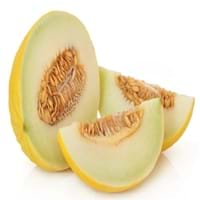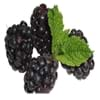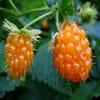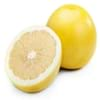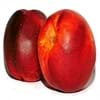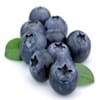Health Benefits
Body hydration, Cancer prevention, Gout treatment, Heart care, Treatment of skin Diseases
Anti depressant, Asthma treatment, Cancer prevention, Heart care, Improves stomach health, Increases metabolic rate, Prevents constipation
General Benefits
Body hydration, Controls blood pressure, Digestive aid, Eye care, Helps in weight loss, Improves eye vision, Maintains healthy cholesterol level, Strengthens bones
Anti-inflammatory properties, Boosts immune system, Controls blood pressure, Eye care, Maintains healthy cholesterol level, Strengthens bones
Skin Benefits
Anti-aging benefits, Brightens and lightens complexion, Hydrates skin, Reduces wrinkles, Treatment of dark spots
Anti-aging benefits, Brightens and lightens complexion, Skin cleansing, Treatment of acne, Treatment of skin diseases
Hair Benefits
Prevents hair loss, Promotes longer and healthier hair, Protects hair
Promotes longer and healthier hair, Shiny hair, Treatment of dandruff
Allergy Symptoms
Abdominal cramps, Breathing difficulty, Coughing, Diarrhea, Hives, Hoarseness, Itching in eyes, Itching of mouth, Itching sensation in throat, Nasal congestion, Nausea, Skin rash, Wheezing
Chest pains, Eczema, Hives inside the cheeks, Itching, Skin rash, Swelling, Watery eyes
Side Effects
Allergic reaction
Allergic reaction
Best Time to Eat
As a snack in the late afternoon, Don't consume at night and before bed, Eat the fresh ones, avoid mixing with any other foods, don't eat after meal., Morning time (before lunch)
As a snack in the late afternoon, Don't consume at night and before bed, Don't eat after meal, Morning time (before lunch), Strictly avoid empty stomach
Vitamin B5 (Pantothenic Acid)
Vitamin C (Ascorbic Acid)
Vitamin K (Phyllochinone)
Phytosterol
Not Available
Calories in Fresh Fruit with Peel
Not Available
Calories in Fresh Fruit without Peel
Not Available
Calories in Canned Form
Not Available
Calories in Juice
Not Available
Calories in Jam
Not Available
Calories in Pie
Not Available
Season
All seasons
Spring, Summer
Varieties
Green Flesh, Yellow Rind and Orange Flesh
Allstar, Annapolis, Cavendish, Chandler, Earliglow, Flavorfest, Honeoye, Jewel, Northeaster, San Andreas, Seascape, Tribute and Tristar
Color
Green, Yellow
Bright red
Inside Color
Light Green
Pink
Grows on
Not Available
Bushes
Soil Type
Sandy loam, Well-drained
Loam
Climatic Conditions
Warm
Cold
Facts about
- The average weight of honeydew melon is 6 pounds.
- 90% of a honeydew is water.
- In middle east countries, dried and roasted honeydew seeds are consumed as snacks.
- Honeydew melons can be 15-22 mm long.
- Strawberry is the only fruit with seeds on its covering.
- Belgium has a museum dedicated to strawberries.
- Americans eat almost 3.4 pounds of fresh strawberries each year.
- They are believed to be an aphrodisiac.
Top Producer
China
United States of America
Other Countries
Brazil, Egypt, India, Iran, Mexico, Morocco, Spain, Turkey, United States of America
Egypt, Mexico, Russia, Spain, Turkey
Top Importer
Not Available
Canada
Top Exporter
Not Available
United States of America
Botanical Name
Cucumis melo
Fragaria Ananassa
Synonym
Not Available
Not Available
Subkingdom
Tracheobionta
Tracheobionta
Division
Magnoliophyta
Magnoliophyta
Class
Magnoliopsida
Magnoliopsida
Subclass
Dillenhidae
Rosidae
Order
Cucurbitales
Rosales
Family
Cucurbitaceae
Rosaceae
Species
C. melo
F. ananassa
Difference Between Honeydew and Strawberry
We might think that Honeydew and Strawberry are similar with respect to nutritional value and health benefits. But the nutrient content of both fruits is different. Honeydew and Strawberry Facts such as their taste, shape, color, and size are also distinct. The difference between Honeydew and Strawberry is explained here.
The amount of calories in 100 gm of fresh Honeydew and Strawberry with peel is Not Available and 33.00 kcal and the amount of calories without peel is 36.00 kcal and Not Available respectively. Thus, Honeydew and Strawberry belong to Low Calorie Fruits and Low Calorie Fruits category.These fruits might or might not differ with respect to their scientific classification. The order of Honeydew and Strawberry is Cucurbitales and Rosales respectively. Honeydew belongs to Cucurbitaceae family and Strawberry belongs to Rosaceae family. Honeydew belongs to Cucumis genus of C. melo species and Strawberry belongs to Fragaria genus of F. ananassa species. Beings plants, both fruits belong to Plantae Kingdom.
